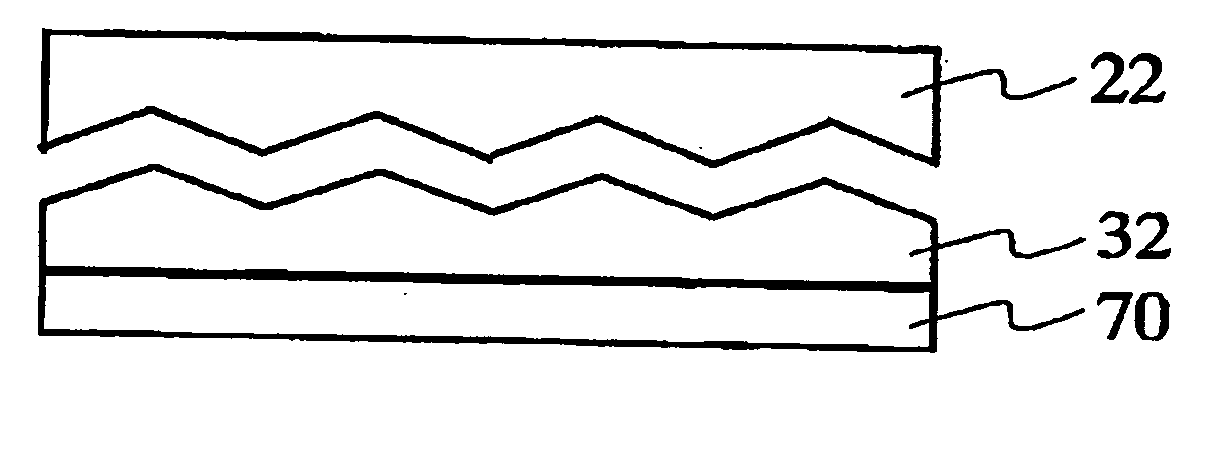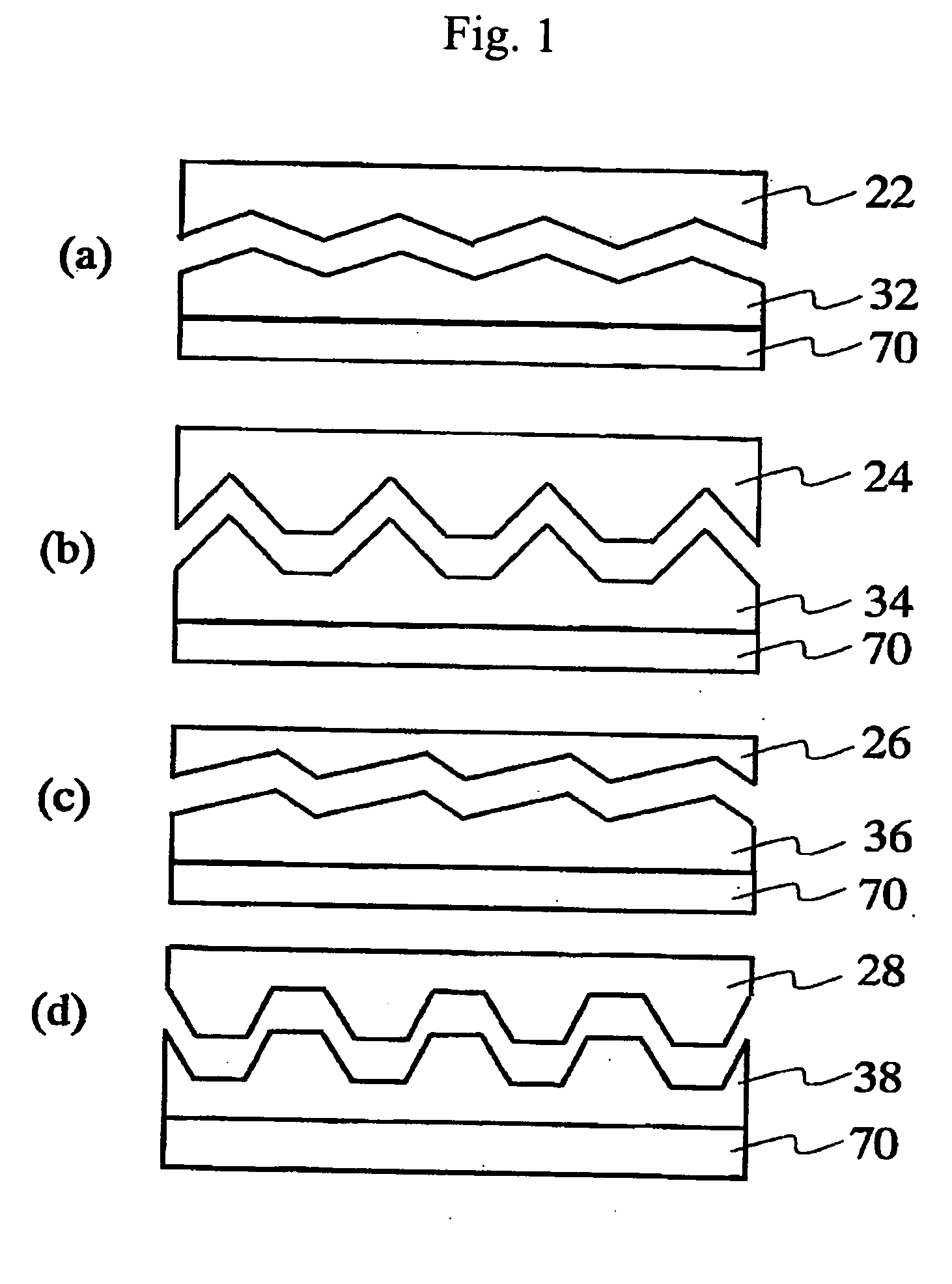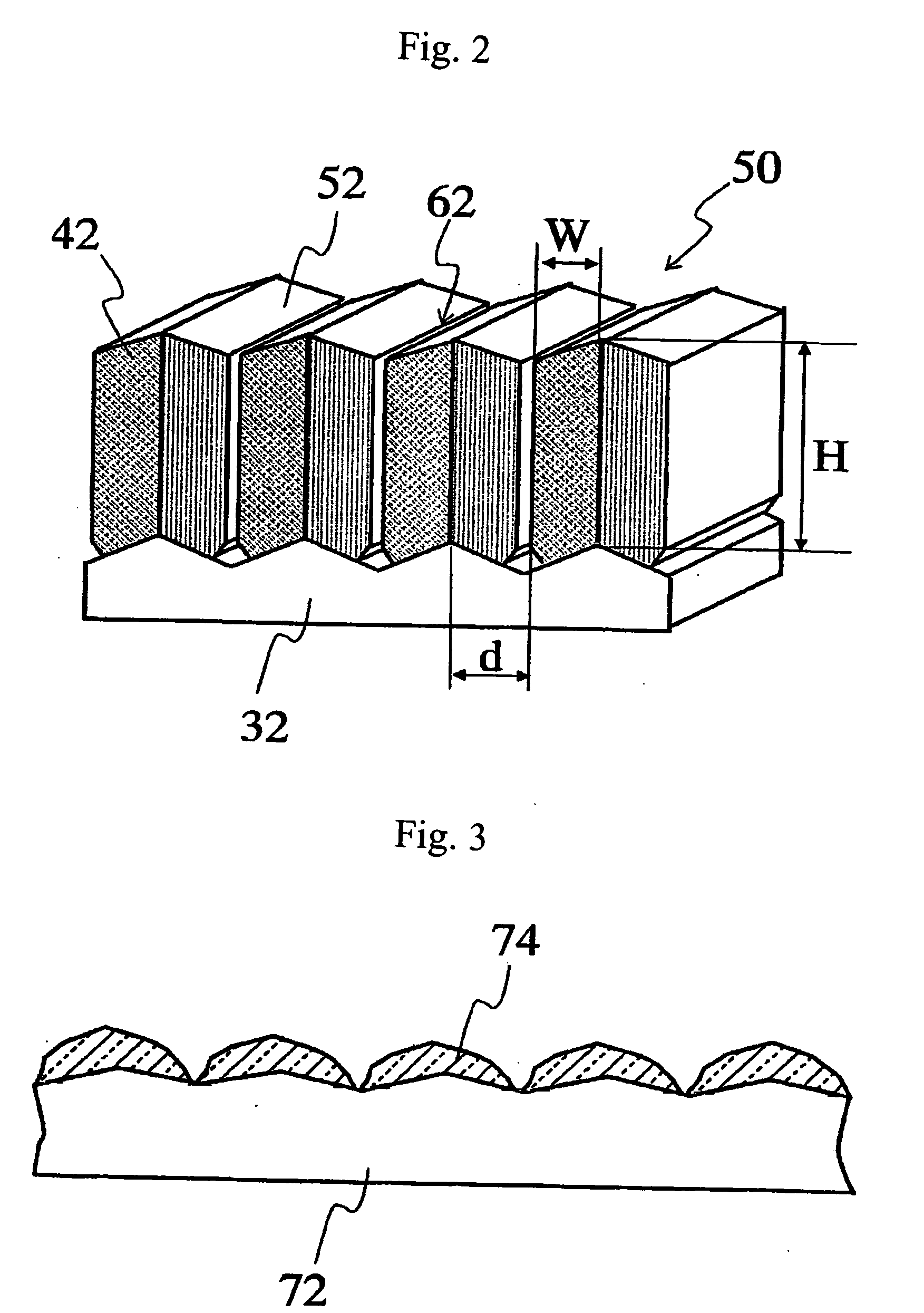Thin-film structure and method for producing the same
a thin film, polarizer technology, applied in the direction of instruments, polarising elements, optical elements, etc., can solve the problems of imposing restrictions on use, large compactness, high luminance, etc., and achieve the effect of low cost and superior characteristics
- Summary
- Abstract
- Description
- Claims
- Application Information
AI Technical Summary
Benefits of technology
Problems solved by technology
Method used
Image
Examples
first embodiment
[0063] In this embodiment, line-shaped roughness is formed by molding. FIG. 1 shows various cross-sections of the line-shaped roughness molded in this manner, with the cross-sections being perpendicular to the lines. A spin coater is used to apply a tetraethoxysilane (TEOS)-based sol film on a quartz glass plate. In this embodiment, a mold 22 having the cross-section shape shown in FIG. 1(a) is pressed against this. The structure is then heated and dried and then the mold is released. After these operations, a heat of 600 deg C. is applied so that a rough film 32 having SiO2 as its main component is formed on a glass substrate 70.
[0064] Next, an AgPd alloy target (Pd: 2 wt % added) is attached to a magnetron cathode 1 of the long-distance sputtering device shown in FIG. 10, and an SiO2 target is attached to a magnetron cathode 2. The quartz glass substrate with the rough surface described above is attached at the position of the base 10 shown in FIG. 10. The magnetron cathode 1 is ...
second embodiment
[0071] In this embodiment, sputtering is used to apply an SiO2 film with a thickness of approximately 100 nm to cover the surface of the plate-shaped structure made in the first embodiment. The degree of polarization measured for an incident light wavelength of 632.8 nm was found to be 99.9% or higher, and transmissivity for TM polarized light was found to be 89.7%, these values being adequately high. As Table 1 shows, similar characteristics were found for other wavelengths.
[0072] The sample above was heated for 1 hour at 500 deg C. in the atmosphere. Table 1 shows the results of optical measurements performed after this operation. Optical characteristics roughly identical to the pre-heated state were maintained, and it was found that covering the plate-shaped structure with a dielectric film provided an extremely high degree of heat resistance.
third embodiment
[0073] In this embodiment, the surface of an aluminosilicate glass substrate was abraded using polishing powder (particle diameter: 100 nm) to form line-shaped corrugated structures on the glass surface. The surface corrugated structure structure on the substrate is similar in shape to that of the first embodiment, but the corrugated structure was much more shallow, with the average depth being approximately 15 nm. The average corrugated structure period was 130 nm.
[0074] The following operation was performed in order to accentuate the corrugated structure depth through the formation of a film to cover the surface. Si targets (B dope) were attached to the magnetron cathode 1 and the magnetron cathode 2 in the long-distance sputtering device shown in FIG. 10. A glass substrate having the corrugated structured structure described above was then attached to the position of the base 10 shown in FIG. 10. The magnetron cathode 1 was inclined 80 deg relative to the normal direction of the...
PUM
| Property | Measurement | Unit |
|---|---|---|
| width | aaaaa | aaaaa |
| height | aaaaa | aaaaa |
| height | aaaaa | aaaaa |
Abstract
Description
Claims
Application Information
 Login to View More
Login to View More - R&D
- Intellectual Property
- Life Sciences
- Materials
- Tech Scout
- Unparalleled Data Quality
- Higher Quality Content
- 60% Fewer Hallucinations
Browse by: Latest US Patents, China's latest patents, Technical Efficacy Thesaurus, Application Domain, Technology Topic, Popular Technical Reports.
© 2025 PatSnap. All rights reserved.Legal|Privacy policy|Modern Slavery Act Transparency Statement|Sitemap|About US| Contact US: help@patsnap.com



